TechRadar Verdict
The Razer Blade 17 has a few small disappointments regarding battery life, but it more than makes up for it by being an absolute powerhouse for PC gamers and creatives alike. Whether you're going to be playing games or making them, this is a machine that can handle anything you throw at it, all while keeping its cool and fan noise at a minimum.
Pros
- +
Outstanding performance
- +
Beautiful, modern design
- +
Fantastic keyboard layout and size
- +
So quiet we thought it was broken
Cons
- -
Incredibly expensive
- -
Disappointing battery life
Why you can trust TechRadar
The Razer Blade 17 (2022) is something of a ‘jack-of-all-trades’ laptop, though this doesn’t mean it doesn’t mean that performance is lackluster in any way. In fact, the Razer Blade series has long been recognized as a machine that can offer you the very best of both worlds if you need a laptop that looks sleek and professional while being a gaming and creative powerhouse.
This 2022 model doesn’t change much in regards to design (if it ain't broke, don’t fix it after all), but rather includes some generational upgrades to 12th-generation Intel Alder Lake processors, DDR5 RAM, and Nvidia’s new GeForce RTX 3080 Ti graphics card, as well as other technical improvements like moving the power button and frankly, one of the best cooling systems we’ve ever experienced in a gaming laptop.
Or is this a creative workstation laptop? Despite Razer being known for its presence in the PC gaming and streaming market, it also has plenty of tech that targets a more professional environment, so while we would consider this to be a gaming-focused machine, it actually ticks pretty much every box to appeal to a creative market.
It’s little wonder then that it’s an official Nvidia Studio laptop, a badge awarded to devices that meet specific criteria, making them more easily identifiable to creatives and artists who need a laptop capable of running demanding applications.
There really is a whole lot to love, but that doesn’t mean that we can’t find faults for the Razer Blade 17. As with all Razer Blade laptops, this is hellishly expensive, with prices starting at $2,699.99 / £2,999.99 / AU$4,899.00 for the RTX 3060 powered model, which means it’s significantly outside of most budgets. Given powerful laptops often suffer from bad battery life, it's also no surprise that the Blade 17 struggles, but it's staggering just how poor the battery life actually is.
If you’re going to be taking the Blade 17 on the move and then plugging it directly into a power outlet though, this is an incredible device that’s well suited for a wide variety of tasks and environments. For anyone looking for something with a large display to play games, sculpt in 3D, or perhaps as an all-in-one streaming machine, Razer has proved that it’s still very capable of creating a masterpiece that should appeal to almost your every need.
Price and availability
Here is the Razer Blade 17 (2022) configuration sent to TechRadar for review:
CPU: Intel Core i7 12800H
Graphics: Nvidia GeForce RTX 3080 Ti
RAM: 32GB DDR5-4800
Screen: 17.3-inch QHD, 240Hz, G-Sync
Storage: 1TB M.2 PCIe NVMe SSD
Ports: 2 x Thunderbolt 4, 3 x USB 3.2 Gen 2 Type-A, 1 x SD Card reader, 1 x HDMI, 1 x Power, 1 x Ethernet
Connectivity: Wi-Fi 6E, Bluetooth 5.2
Camera: FHD Webcam w/ IR
Weight: 6.06 pounds / 2.75 kg
Size: 0.78 x 10.24 x 15.55 inches / 19.9 x 260 x 395 mm
As mentioned, you can grab the lowest spec of the Razer Blade 17 for $2,699.99 / £2,999.99 / AU$4,899, which will net you a model equipped with an RTX 3060 GPU, 16GB of DDR5 RAM, and a 165Hz QHD display.
Sign up for breaking news, reviews, opinion, top tech deals, and more.
Every model is equipped with a 1TB SSD for storage, and all but one have Intels latest Alder Lake Intel Core i7-12800H processors, with the only exception being a variant that bumps that up to an Intel Core i9-12900H.
GPU options include an RTX 3060, RTX 3070 Ti or RTX 3080 Ti, and you also get a few different configurations for the display from 1080p to 4K with variable refresh rates. Our review model is equipped with an RTX 3080 Ti, an Intel Core i7-12800H processor, the 240Hz 1440p version of the display and costs $3,999.99 / £4,299.99 / AU$7,199.
The Razer Blade 17 is readily available on every regional version of the Razer website we visited, though it seems that not many third-party sites are selling the 2022 model, so if you’re wanting to get your hands on the same version we reviewed, you’re best heading to the Razer website directly.
Design

Razer is fairly consistent with the design of its laptops, so the matte-black chassis and illuminated brand logo are a familiar sight. The Blade 17 is clearly a modern and stylish machine, lacking most of the outlandish ‘gamer’ features that you find on other powerful gaming laptops like the RGB bar and angry font seen on the Asus ROG Strix SCAR 17 G733. It’s tricky to keep clean though, as while that chassis looks pretty smart, it attracts fingerprints like nobody's business, and you do still get that Razer Chroma RGB lighting on the keyboard.
The keyboard is gorgeous though, with keys that feel widely spaced for a laptop, giving them a feeling that’s more akin to an actual, standalone keyboard which should help folks adjust to writing if they’ve only previously experienced a desktop-only setup before.
It's a joy to type on too, with clicky keys that don’t have any ‘squish’ to them. The power button has moved from its previous location within the right-hand speaker grill and placed onto the top-right side of the keyboard, which, while precarious if you type quickly, didn’t cause us any issues with accidentally putting the device to sleep.
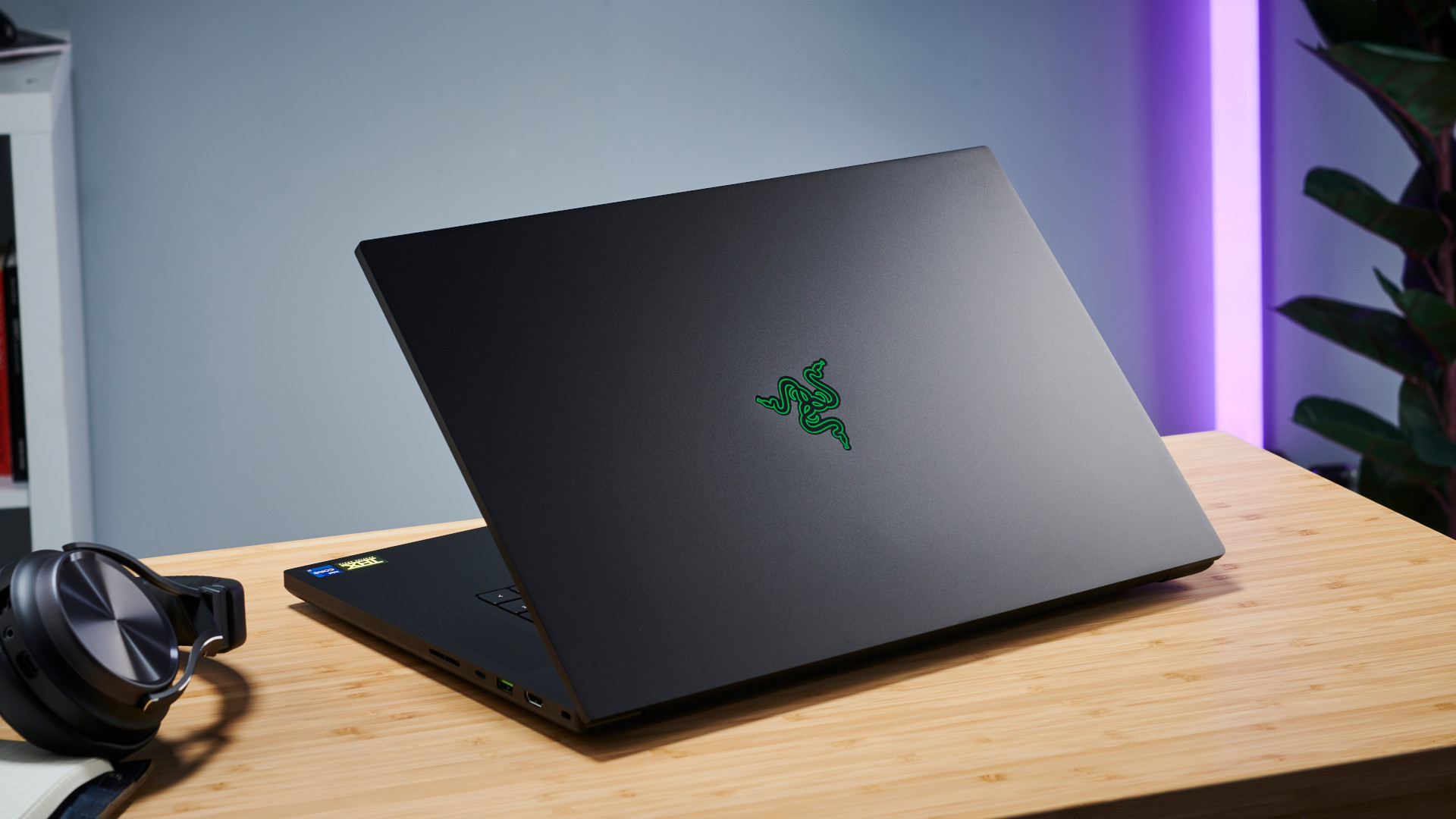
The Blade 17 is impressively sized too, with a 17.3-inch 16:9 display, this beast weighs in at 6.06 pounds / 2.75 kg, so while the overall design feels exceptionally modern, lugging this around feels like more of a throwback to the huge, chunky gaming laptops of the early 2010s. The 16:9 display ratio does feel a little dated now that so many offerings across both gaming and creative productivity are moving over to the 16:10 ratio, but it’s large enough to not really need that additional vertical space.
Despite its size, it does fit into a standard-sized backpack, so as long as you don’t travel for long enough for the weight to cause you any strain, it is easily transportable. It’s also worth pointing out that this is hardly trying to appeal to the same folks who want incredibly slim, lightweight ultrabooks, and that the weight is a decent tradeoff for the hardware that’s been crammed into it.
The size is also a great selling point. That beautiful IPS display comes in a few different variations as mentioned, so you can ensure you’re getting the right resolution and refresh rate to best serve your needs. For those wanting to make the most out of its creative benefits, you can opt for the slightly more expensive 4K model with a 144Hz refresh rate, which is ideal for video editing as it can reach 400 nits of brightness and 100% of the Adobe RGB color gamut.
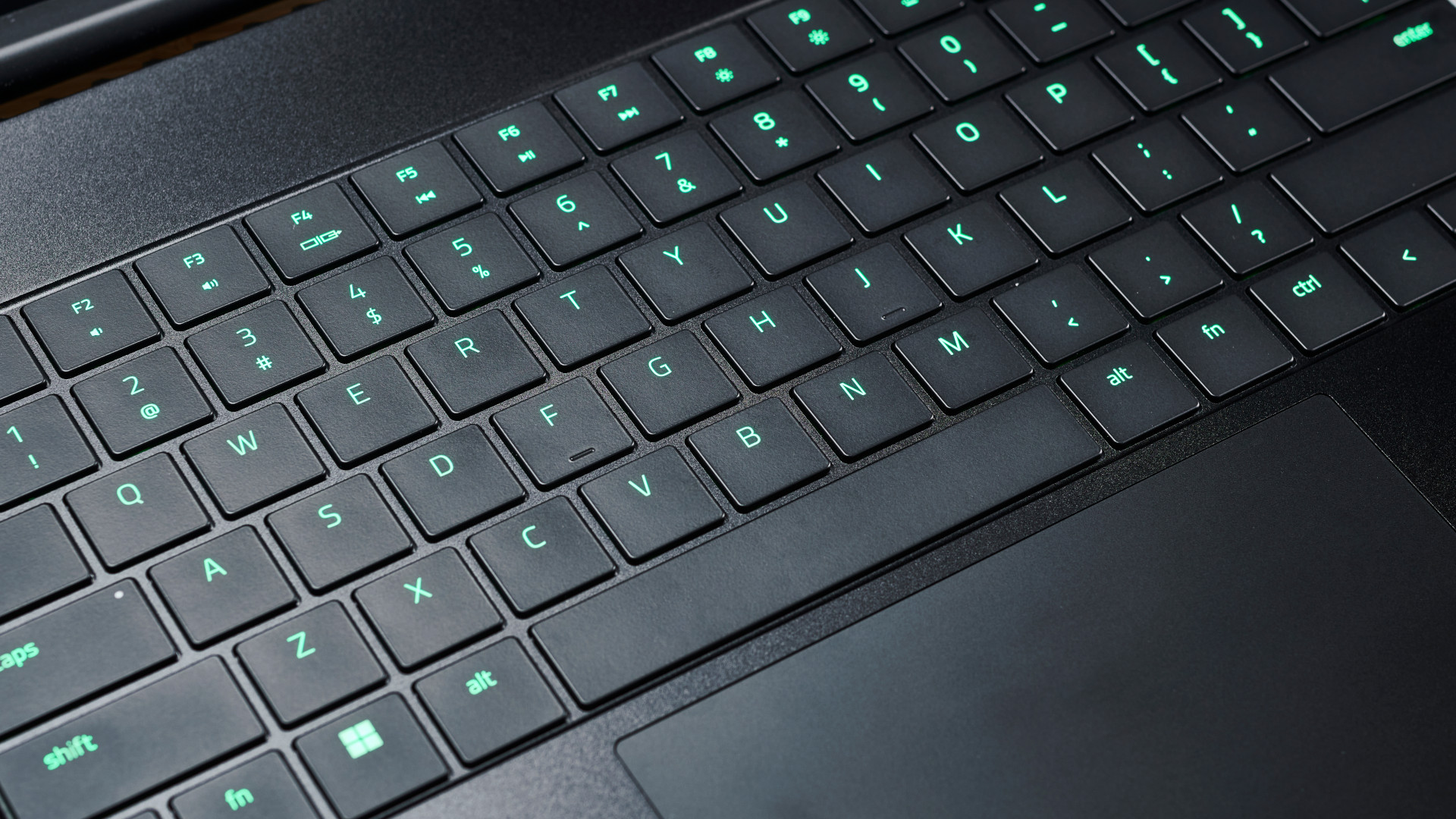
If gaming is more your thing, the same RTX 3080 Ti spec comes with a choice of a 1080p resolution and 360Hz refresh rate for pro-level players who can squeeze every last frame in fast-paced competitive titles, or a 1440p model with 240Hz as a good halfway point between the two, though both of these models can only achieve up to 300 nits of brightness.
One of the best features though likely has nothing to do with the size or even the internal hardware on this laptop. The Razer Blade 17 has ports for days, enough for you to plug in every peripheral or accessory you potentially own.
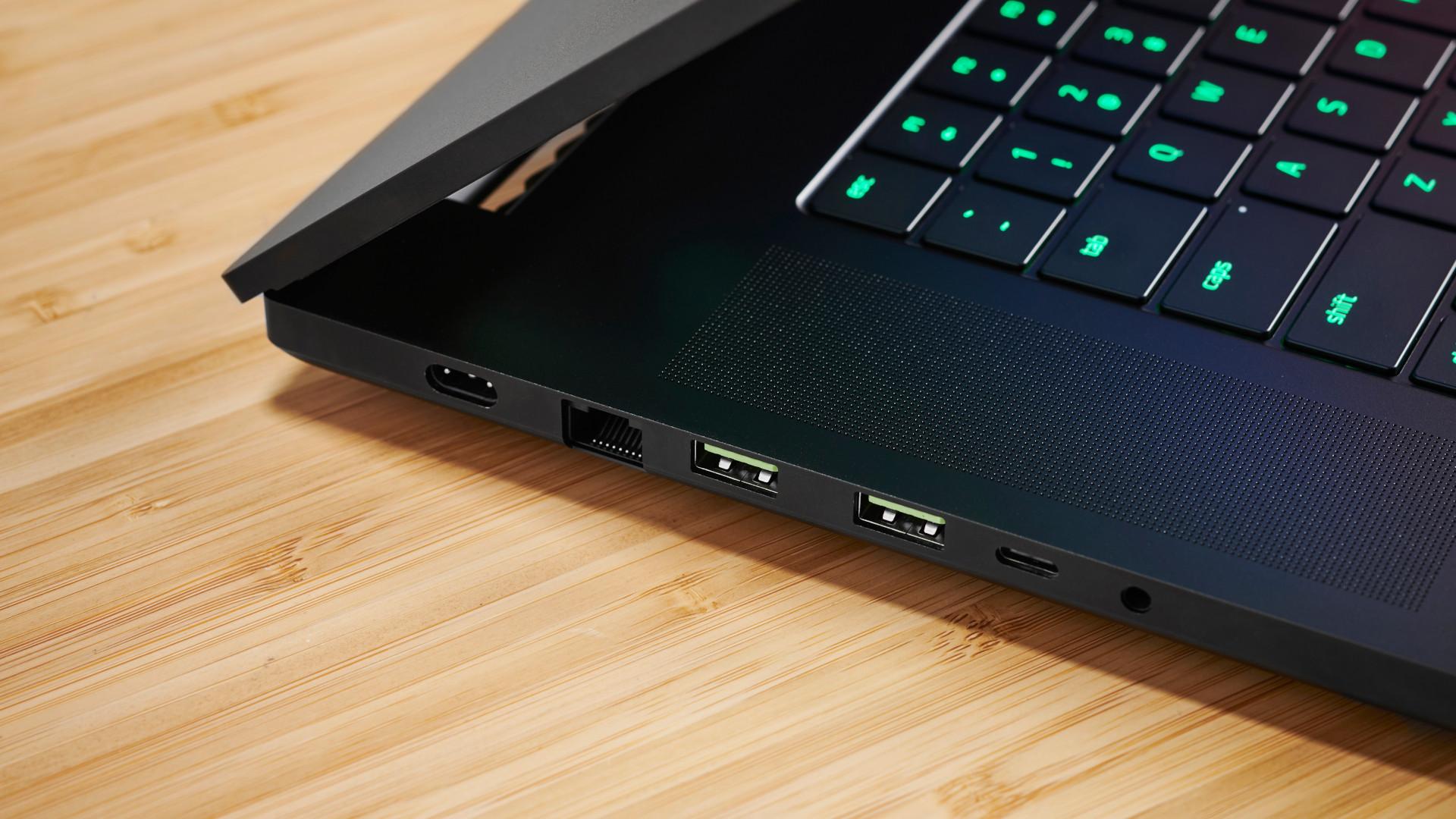
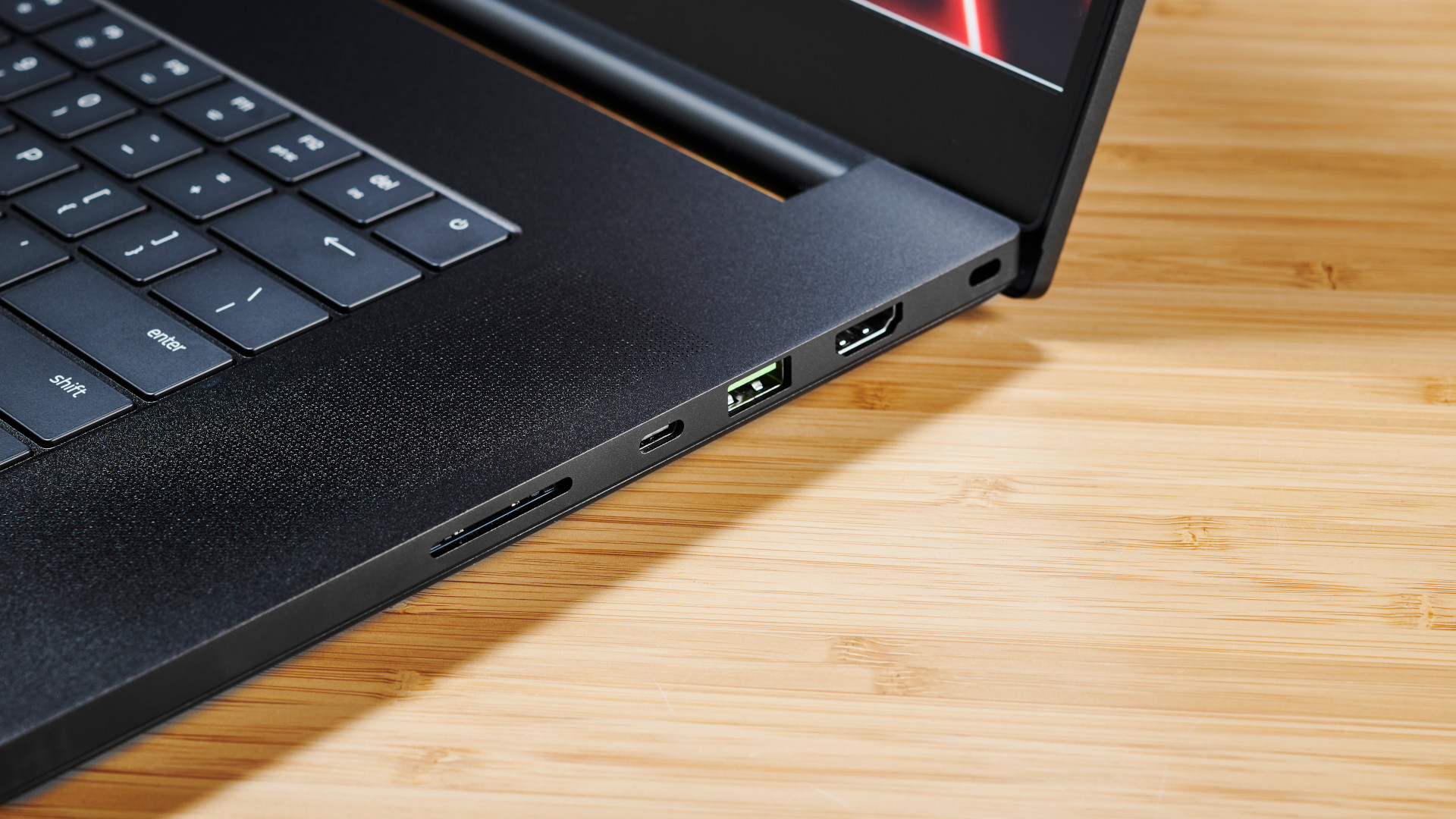
You’re getting Three USB3.2 Gen 2 Type-A Ports, Two Thunderbolt 4 Ports (USB-C 3.2 Gen2), One Ethernet port, one HDMI 2.1 port, and an SD card reader alongside a power port for the premium-feeling braided power cable with an angled connector to keep your desk tidy.
All those ports allow you to also convert the laptop into a desktop setup by plugging in a mouse, keyboard, headset, and monitor without the need for any USB-C docks. Given the backlash that brands like Apple faced for removing most of the ports on its premium MacBook Pro lineup a few years ago and the ongoing trend to make portable workstation laptops as skinny as possible, thereby removing space for the ports we use daily, this is a breath of fresh air.
Performance
Here's how the Razer Blade 17 (2022) performed in our suite of benchmark tests:
3DMark: Night Raid: 5,3450; Fire Strike: 26,806; Time Spy: 12,843
Cinebench R20 Multi-core: 5,996 points
GeekBench 5: 1,410 (single-core); 12,798 (multi-core)
PCMark 10 (Home Test): 8,397 points
PCMark 10 Battery Life: 3 hours and 3 minutes
Battery Life (TechRadar movie test): 2 hours and 38 minutes
Total War: Three Kingdoms (1080p, Ultra): 106 fps; (1080p, Low): 337 fps
Metro Exodus (1080p, Ultra): 89.9 fps; (1080p, Low): 190 fps
Given its beastly components, the Razer Blade 17 runs as expected - it chews through everyday tasks thanks to its 32GB of DDR5 RAM, the latest generation of memory. We used it daily with a frankly embarrassing number of Google Chrome tabs open across two displays, all while streaming music on Spotify and running various creative applications such as Adobe Photoshop, Clip Studio Paint, and Blender, and it never appeared to struggle.
Our benchmarks showed similarly impressive results, with scores in 3D Mark that give full desktop systems a run for their money, and similarly impressive results seen across the entire range of tests that we run. For gaming, the Blade 17 managed to achieve just under 90FPS in Metro: Exodus in Ultra settings, which is well over the minimum that would be required to play the game at an enjoyable level.
Cyberpunk 2077 similarly managed to hit 78FPS with every settings option maxed out, which is nothing to sniff at considering how the game has struggled to run on older gaming systems and consoles. It's safe to say that as far as gaming is concerned, it’ll be able to handle anything you throw at it, including VR.
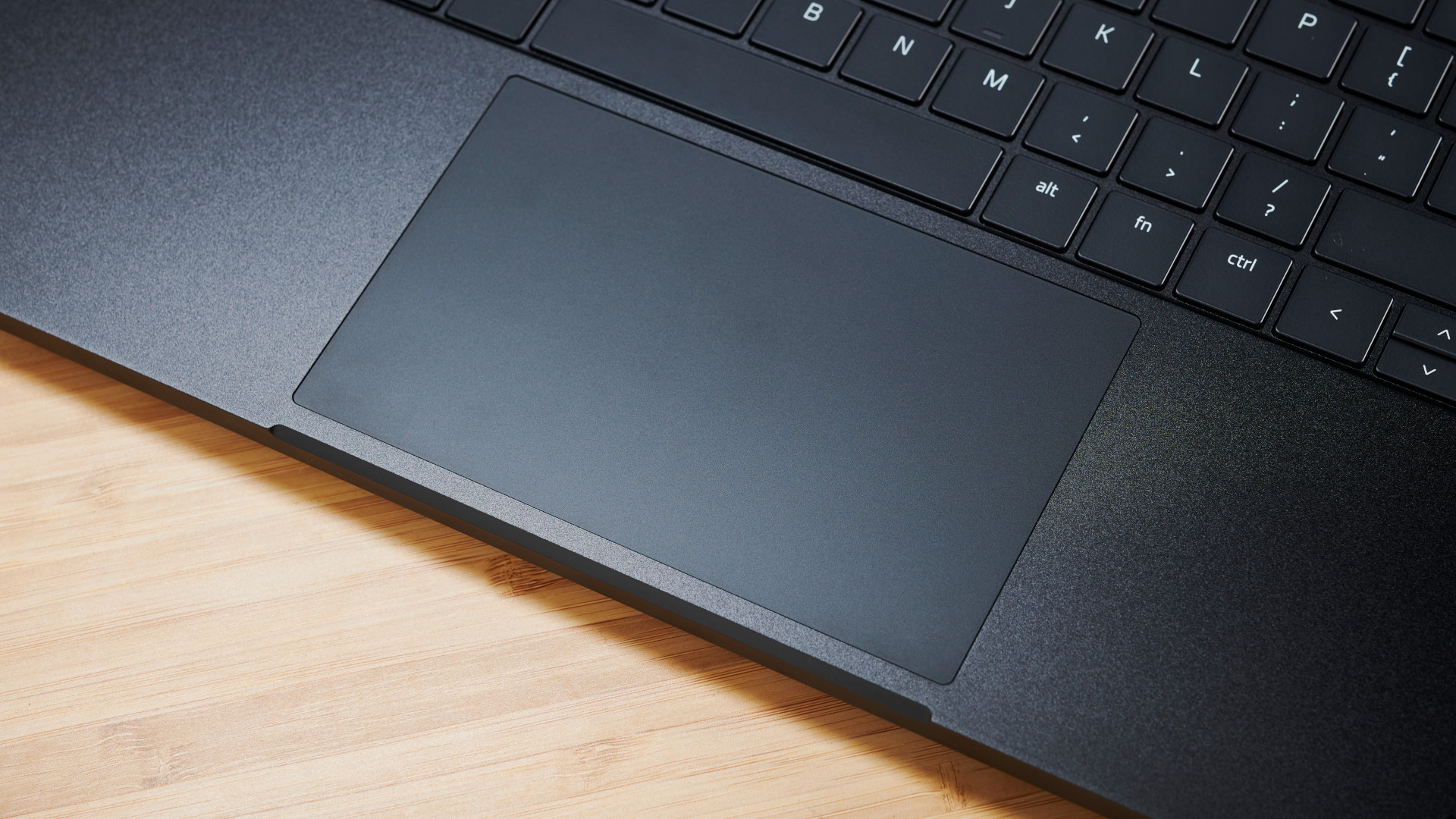
Creative apps are also just as impressive, with the Blade 17 eating through our Blender Classroom benchmark in just 7 minutes and 47 seconds and hitting 58FPS in our Handbrake test. This really is a laptop that can do it all, as long as you’re up to heaving it around with you wherever you go, making it one of the best portable replacements for a full desktop we’ve seen, especially for a Windows-based device.
Even more surprising is that regardless of how much work we threw at it, it remained cooler than expected and astonishingly silent. We took the Blade 17 to a LAN even to put it through its paces, running multiple applications alongside games and music streaming, and it barely made a peep.
At one point, we were so concerned over how quiet it was that we were convinced it was broken in some way. This isn’t the case, as while the chassis got a tad warm, it never came close to overheating and didn’t require a cooling pad to try and manage the thermals.
Battery life
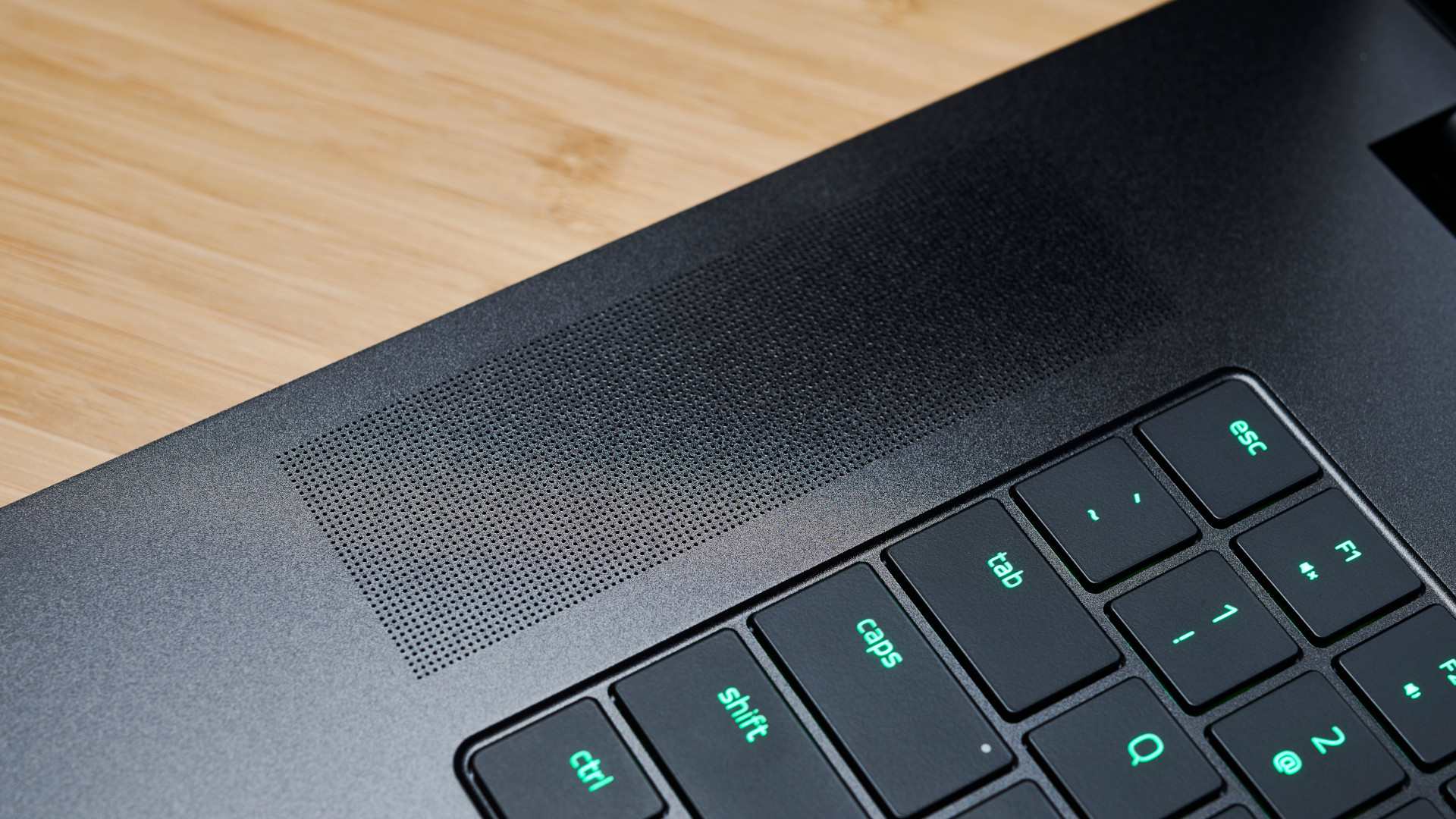
Let's not beat around the bush: battery life for the Razer Blade 17 is abysmal. Those impressive components also have an impressive power draw, so you won’t want to be too far away from a power source if you plan on taking it with you on the go.
The 280W power brick that comes with the Blade 17 is going to be essential as while it does support USB-C charging, this is limited to 54W so you won't be able to keep the laptop topped up while it's in use. This is however a great feature for if the device is switched off or in sleep mode so that you can add a little extra juice back into the machine.
General productivity netted around 3 hours and 12 minutes of general browsing, listening to music on Spotify, or streaming some anime on Crunchyroll, but this is cut down significantly if any demanding work is thrown its way. We managed to play around with sculpting in Blender for around 1 hour and 17 minutes before it ran dry, and gaming was even worse, managing just 57 minutes playing CyberPunk 2077.
Our benchmarks also spat out some similar results, with a looped battery test coming in at 2 hours and 38 minutes while the PCMark10 battery test only ran for 3 hours and 3 minutes. If you need something that can last a while away from an outlet then consider the Dell XPS 17 for general productivity, the Asus ROG Zephyrus G15 for gaming, and the Razer Blade 14 for creatives.
Camera
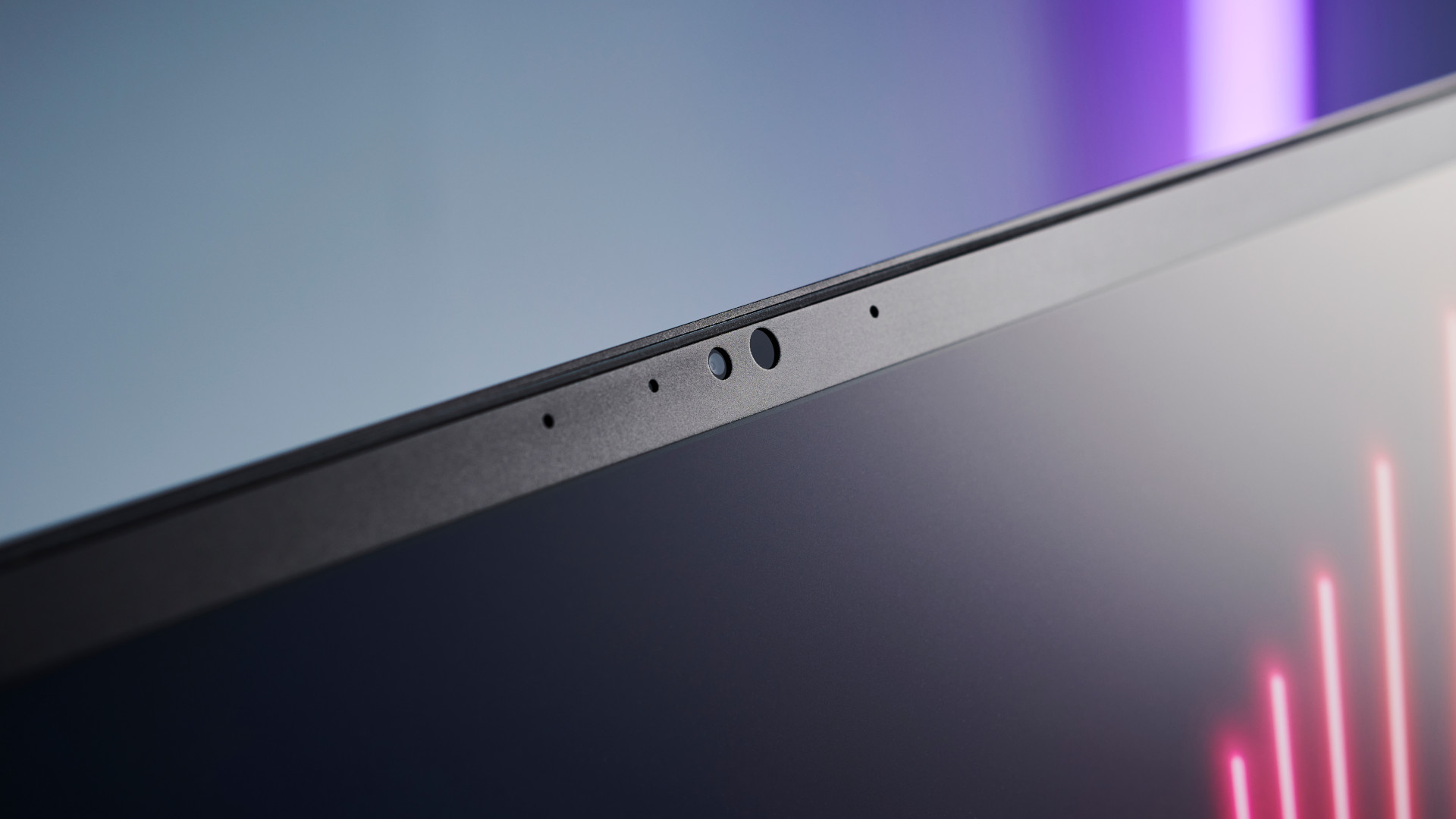
A decent camera is still important as ever, even as things start to feel like they’re going back to pre-Covid normalcy, but you shouldn’t expect anything built into a laptop to really knock your socks off. The 1080p offering in the Blade 17 hasn't made many changes from the version seen in the previous generation of Blade laptops, which is good because this is actually a fairly impressive camera.
The sensor still struggles a bit in low-light conditions, but you’ll be hard-pressed to find a better alternative, especially within the gaming or creative laptop market. The quality of the actual image is great in digital calls too, so if you’re looking to use this as a machine for work you can rest easy knowing you’ll look your best on Zoom or Microsoft Teams.
Despite the Blade 17 being great as an all-in-one streaming laptop, we wouldn’t suggest using the built-in webcam. You’ll get better results using a dedicated option, like something from our list of the best webcams you can buy, or even consider buying one of Razer’s own streaming-focused cameras such as the Razer Kiyo Pro.
Buy it if...
You want a 'Jack-of-all-trades' laptop
Is it for gaming? Is it for creative applications? Or perhaps this is a powerful, portable workstation? regardless, the Razer Blade 17 can do it all, and with a flourish at that.
You value style as much as substance
The Razer Blade 17 is fairly hefty, but its modern design and minimal 'gamer' accents allow it to blend into the professional work of office laptops just as easily as many workstation devices.
You already love Razer products
If you're a fan of Razer's brand, then chances are you had your eyes on a Blade series laptop anyway. it certainly helps that it shares the same great aesthetic as many other Razer products, though with minimal 'gamer' vibes.
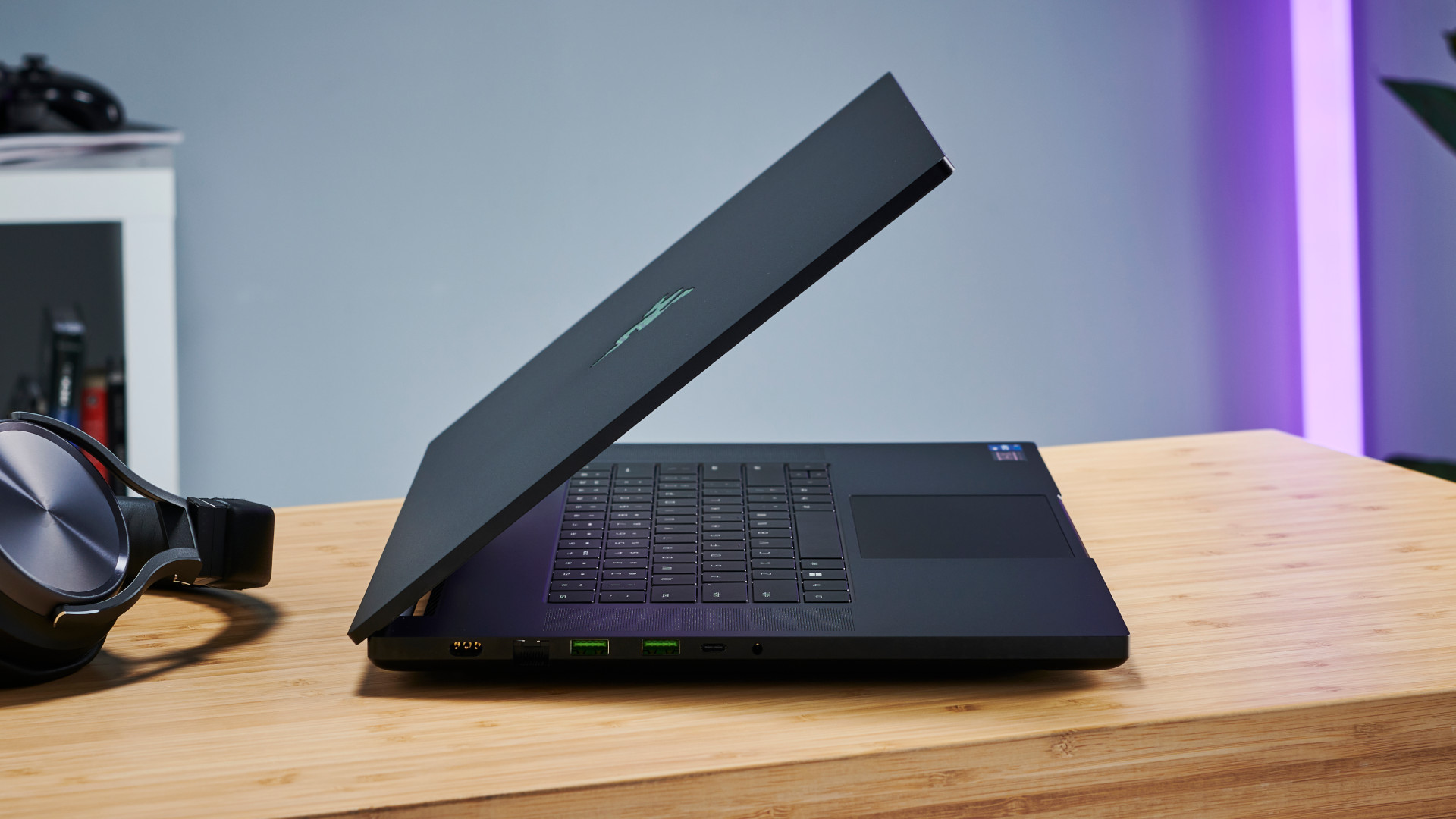
Don't buy it if...
You're on a budget
The Razer Blade 17 can cost an eyewatering sum of cash if you opt for the top-line spec model. Is it expensive? Certainly, but we wouldn't say its necessarily overpriced for what you're getting.
You need long battery life
The Razer Blade 17 shouldn't be on the top of any list if your main concern is battery life, unless you're happy to remain stuck near an available power outlet all day.

Jess is a former TechRadar Computing writer, where she covered all aspects of Mac and PC hardware, including PC gaming and peripherals. She has been interviewed as an industry expert for the BBC, and while her educational background was in prosthetics and model-making, her true love is in tech and she has built numerous desktop computers over the last 10 years for gaming and content creation. Jess is now a journalist at The Verge.
